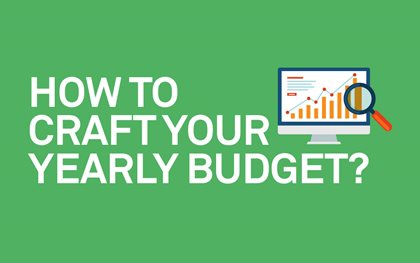Six steps to build your community budget
 A community budget is the launchpad for all of the board’s initiatives. It is more than a series of numbers; it’s the framework for accomplishing your community’s objectives. That’s what makes it so important.
A community budget is the launchpad for all of the board’s initiatives. It is more than a series of numbers; it’s the framework for accomplishing your community’s objectives. That’s what makes it so important.Yet, unfortunately, many boards are somewhat at a loss when it comes to creating and managing their community budget.
That’s where the best property management company can help. Experienced property managers have created countless budgets, and they’re familiar with the best practices entailed in creating one that helps your community accomplish its goals. So to help you get started, here are six community budget basics you can follow.
-
Remember GERT.
It’s a pretty weird word, so it should be pretty easy to remember. It stands for everything you’ll need to keep in mind when creating a successful community budget:
- Goals and objectives of your association
- Estimated common element expenses and income
- Reserves that you’ve calculated
- Timeline for your budget
Together, these basics create the framework for what you’re doing. Remembering the goals of your association helps you keep the big picture in mind while you’re examining the details. Estimated expenses and income form the numerical foundation. Reserves offer an important cushion or, if necessary, revenue source. And the timeline is key so that you deliver the budget in a way that it can take effect promptly.
- Goals and objectives of your association
-
Gather materials.
Chances are this isn’t the first budget created by your association. And if it is, many of these documents are monthly records that should be on hand. Either way, you should be able to get your hands on some past documents that will help you structure your budget. These documents could include:
- Past budgets
- Financial statements
- Monthly management report
- Reserve study
- Association documents
- Schedule of delinquent unit owner accounts
- Contracts for services
- Wish list items
- Past budgets
-
Define and populate the essential budgetary sections.
You have now identified your GERT and you have important background materials and records to help guide you along the way. Now it’s time to synthesize that information into some key sections of the community budget. Now, every budget is different, but for the most part they should all include the following categories:
Operating budget:
- Estimated common expenses
- Expenses for a unit owner
- Administration
- Insurance
- Management fees
- Maintenance
- Security provisions
- “Other” expenses (specific to your community or part of the country, like “hurricane prep”)
- Landscaping
- Provision for bad debts
Reserve budget, which would cover projects such as:
- Roof replacement
- Building painting
- Pavement resurfacing
- Capital expenditure or deferred maintenance greater than $10,000
- Estimated common expenses
-
Keep these considerations in mind.
As you populate the sections in Step 3 with numbers, you’ll want to keep a few things in mind. This includes the level of service and amenities you wish to provide residents, whether any programs are offered or designed by owners (educational, clubs, events, things like that), the historical data that may inform how you budget for the upcoming year, economic considerations (such as gas prices, utility variances, changing labor costs and insurance) and benchmarking your maintenance fees to comparable properties based on similar size, services and amenities.
Beyond that, you’ll want to analyze your vendor contracts to see if there are any anticipated increases or decreases in their rates. Allow for capital improvement projects to be allocated in your budget if you wish to avoid a special assessment. And take a fresh look at your association document requirements to get a good handle on maintenance requirements and costs associated with your common elements. Finally, remember that it’s always good to conduct some upkeep (such as painting) before the community actually looks like it needs it, keep in mind that the older your property is the greater your maintenance costs will be, and be aware that deferring maintenance increases costs.
-
Know where the money’s coming from.
Of course, your community budget isn’t just about money going out. It’s about money that’s coming in, too. Know how your budget will be funded. Beyond the assessments paid by each owner, this can include rent, interest and other sources. A payment schedule must be determined so your budget does not contain funding gaps.
-
Use the right tools.
Now that you have the right philosophy, the right parameters, all the necessary background information, and the framework for your budget, it’s time to track it with financial software. While spreadsheet programs exist such as Excel for PC and Numbers for Apple products, they will only provide you with the basics. The best professional property management companies have advanced systems and tools that aid in the production, and ongoing analysis, of budgets.
With that, you should be on your way to creating your own community budget. Granted, it’s still a lot of work, but at least now it’s not so much of a mystery. A good property management company can help guide you through all of these steps – and a whole lot more.